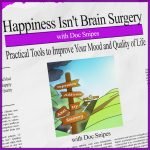
Dialectical Behavior Therapy Techniques
Emotion Regulation
Presented by: Dr. Dawn-Elise Snipes Executive Director, AllCEUs
Podcast Host: Counselor Toolbox & Happiness isn’t Brain Surgery
Author: Journey to Recovery (2015) & Happiness Isn’t Brain Surgery (2017)
Objectives
~ Define emotion regulation
~ Identify why emotion regulation is important and how it can help
What is Emotion Regulation
~ Emotional dysregulation results from a combination of
~ High emotional vulnerability
~ Extended time needed to return to baseline
~ Inability to regulate or modulate your emotions
~ If you are emotionally reactive you may find that your environments have often been invalidating
Understanding Emotions
~ Emotions are a natural response
~ Emotions are functional to the person in their reality at that moment
~ Emotions function to:
~ Communicate to others and influence and control their behaviors
~ Serve as an alert or alarm which motivate your own behaviors
What is Emotion Regulation
~ Emotional regulation is the ability to how you experience and express emotions
~ Emotion Regulation
~ Mitigates unwanted emotions by reducing vulnerabilities
~ Teaches that:
~ Emotions in and of themselves are not good or bad
~ Suppressing emotions makes things worse
Emotion Regulation & Vulnerabilities
~ Sleep
~ Nutrition
~ Illness
~ Pain
~ “Stress”
Activity
~ Reactivity Solution
~ Identify all of the vulnerabilities you have today, and decide how much “room” you have for additional stressors
~ What can you do to make room for stressors today? (What vulnerabilities can you eliminate?)
Activity
~ Vulnerability Reduction: How can you reduce each one of these vulnerabilities
~ Lack of quality sleep
~ Poor nutrition (including hydration)
~ Pain
~ Illness
~ “Stress”
Activity
~ Emotions are normal
~ Think about finding a spider crawling on the wall next to you
~ In that moment, your reality at the time, did the situation involve a threat to your safety or sense of control?
~ If so, getting anxious would be a normal response
~ Think about a time you got angry because a friend disagreed with you
~ In that moment, your reality at the time, did the situation involve a threat to your safety, sense of control or self-esteem?
~ If so, getting angry was normal
Addressing Emotions
~ Change the reality to change emotions
~ The situation
~ Your knowledge
~ Your thoughts
Activity
~ Emotions are normal
~ Think about finding a spider crawling on the wall next to you
~ The situation
~ Your knowledge
~ Your thoughts
~ Think about a time you got angry because a friend disagreed with you
~ The situation
~ Your knowledge
~ Your thoughts
Section Summary
~ Emotions are not good or bad.
~ You tend to be more reactive with unpleasant emotions when you are already “vulnerable”
~ By reducing vulnerabilities you can reduce your reactivity because you have more energy available to deal with what life throws at you.
~ The next step is to address unpleasant emotions by improving the next moment through changing
~ The situation
~ Your knowledge
~ Your thoughts
